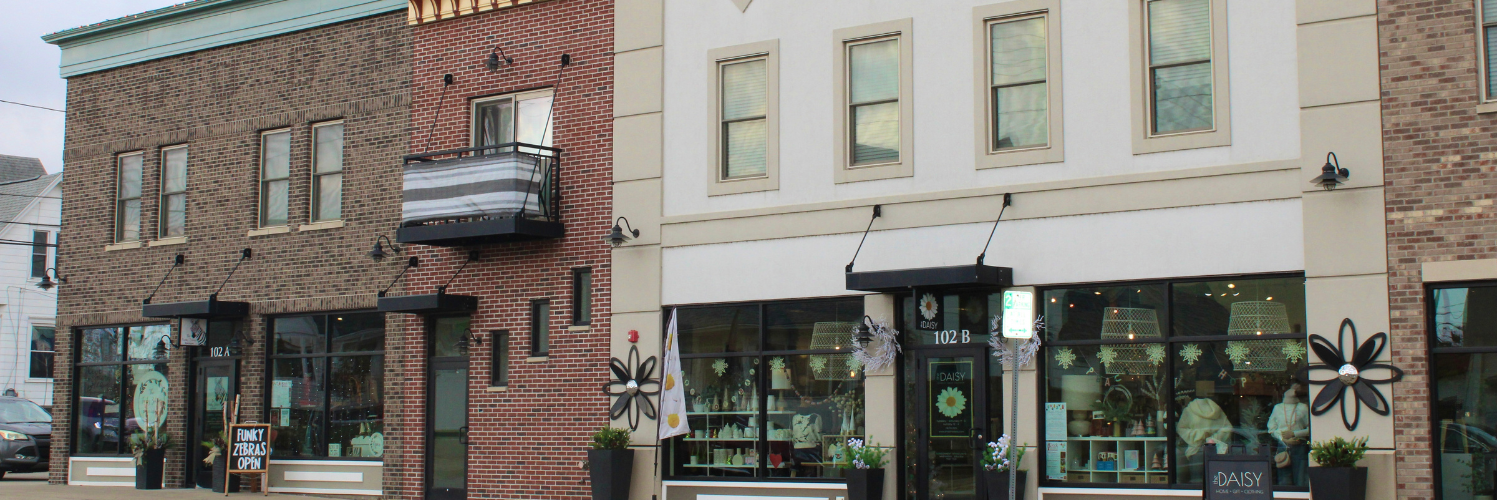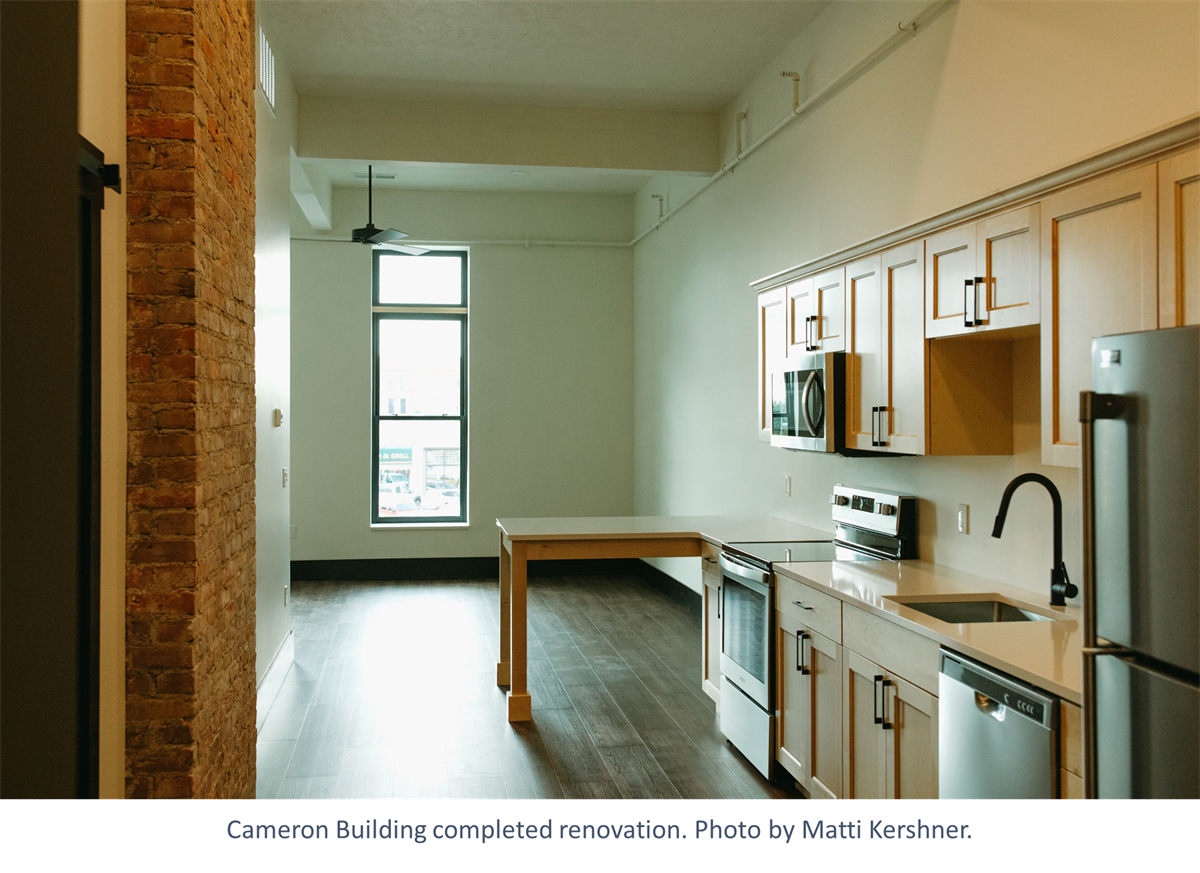8 Main Street Communities Empowered by The Hartford Small Business Accelerator Grants
Eight communities have been selected to receive the 2025 Small Business Accelerator grants, in partnership with The Hartford.

Last year's Congressional appropriations package – the FY23 Omnibus – included $85M for grants to eliminate barriers to the production and preservation of affordable housing. Administered by the Department of Housing and Urban Development (HUD), Pathways to Removing Obstacles to Housing program (PRO Housing) will offer grants from $1M to $10M to state and local governments and other eligible recipients for a variety of activities aimed at encouraging housing growth and lowering barriers to affordable housing development. Preservationists and Main Streeters can leverage this opportunity in partnership with applicants advocating for the use of preservation tools and incentives to close the gap on project funding and implementation.
Applications to the PRO Housing program are due October 30, 2023. See the Notice of Funding Opportunity for more information.
The National Trust for Historic Preservation (NTHP), Main Street America (MSA), and countless preservationists nationwide advocate strongly for the creation and retention of affordable housing through the use of historic preservation tools and incentives. Nearly half of Americans say housing affordability is a problem in their communities. In recent research conducted by MSA, 87 percent of local Main Street leaders stated that there is not enough housing to accommodate those who want to live in the district and 70 percent reported that the lack of built-out space holds back economic development in their downtowns or districts.
Considering the availability of vacant space and the urgent need to prioritize adaptive reuse as a climate strategy, the creation and preservation of housing units in existing built space should be a focus for any community seeking to address this crisis. While historic preservation is sometimes cast as an impediment to housing creation, numerous studies indicate that historic preservation can be compatible with increased density, community preservation, and equitable outcomes. Preservationists and Main Street leaders should be at the table working on a collaborative approach to reducing barriers to housing development and educate community members on the role of preservation and adaptive reuse and its benefits.
The PRO Housing program, created through the FY23 Omnibus budget bill, shares its design and goals with an emerging piece of legislation, the Yes In My Backyard Act (S. 1688/H.R.3507), also known as the YIMBY bill. The YIMBY bill was reintroduced in the 118th Congress by U.S. Senators Todd Young (R-Ind.) and Brian Schatz (D-Hawai’i), and U.S. Representatives Derek Kilmer (WA-06), Mike Flood (NE-01), Emanuel Cleaver, II (MO-05), and Brittany Pettersen (CO-07). If enacted, the bill would require entities receiving Community Development Block Grant (CDBG) funds to report on activities to reduce barriers to the creation of affordable housing. While certain provisions of both YIMBY bill and HUD’s PRO Housing Program cite historic preservation policy as a potential barrier to affordable housing development, we believe that historic preservation can and should be a part of the solution.

The program allows for a broad variety of uses eligible under CDBG rules. Many of these eligible uses are aligned with historic preservation and Main Street goals and ongoing programmatic activities, including:
If your city or state is applying for the PRO Housing Program – or planning other actions to increase affordable housing – consider how you can collaborate with local leaders to ensure preservation is part of the solution. The Preservation Priorities Task Force’s Affordable Housing and Density Issue Brief offers a series of recommendations for incorporating preservation activities into affordable housing planning including through zoning, code enforcement, and financial incentives. For example, adoption zoning overlays can achieve combined goals of preventing demolition of historic structures, retaining existing affordable housing, and encouraging compatible new development on vacant parcels. According to a study by the Los Angeles Conservancy, within historic preservation overlay zones over 12,000 new housing units were created through the adaptive reuse of historic buildings during the last 20 years.
Adoption model building codes can also support both housing and preservation priorities. Recently, a national group of Main Street architects, along with the Association for Preservation Technology, formed a task force to advocate the importance of using the International Existing Building Code (IEBC) for all historic buildings. While this code offers few formal provisions for historic properties, blanket exceptions exist to protect character-defining features in certain circumstances. The IEBC offers several compliance paths to support flexibility for developing housing in historic properties.

Preservationists and Main Streeters can also play a role in ensuring that the development of affordable housing enhances neighborhood vitality. Upper floor housing to buildings in a commercial corridor adds vital foot traffic creating a potential increase in local business sales. The addition of neighborhood amenities and civic infrastructure to a community increases the quality of life in housing projects.
The PRO Housing program offers multiple ways to address both the development of affordable housing and the preservation of our existing built environment but requires the collaboration of local entities to ensure community voice is centered in the application process. To best advocate for preservation as part of the solution, preservationists can use outreach and engagement to create equitable access to preservation processes. Collaboration with applicants and other partners during the application process is key to ensuring that preservation can be used as a tool for increasing and preserving affordable housing.